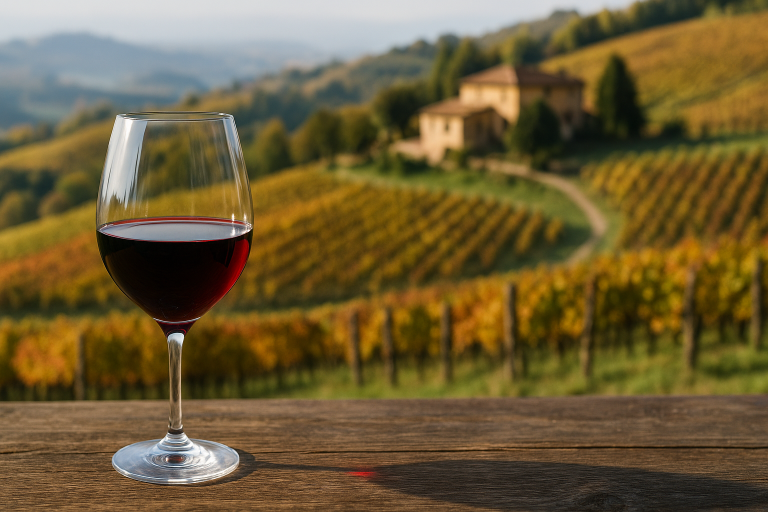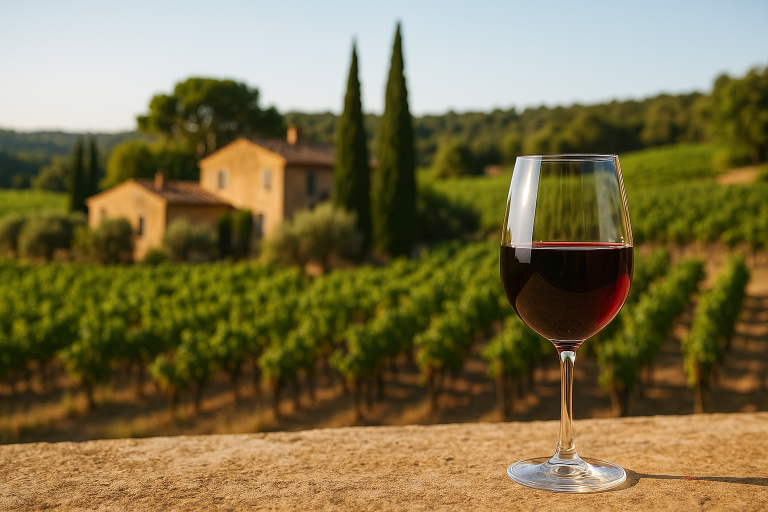Rich, perfumed, and full of soul, Touriga Nacional is Portugal’s crown jewel — a grape that defines the character and heart of Portuguese red wine. Best known as the backbone of Port, it also produces remarkable dry wines that combine structure, intensity, and aromatic elegance. Touriga Nacional is a grape of contrasts — both muscular and refined, rustic and regal — and its story is deeply woven into Portugal’s centuries-old winemaking heritage.
A Brief History
The origins of Touriga Nacional are deeply rooted in northern Portugal, particularly the Dão and Douro regions. Though the exact date of its cultivation is uncertain, records suggest that Touriga Nacional has been grown in Portugal for hundreds of years, long before the birth of fortified Port wine.
It rose to prominence in the 18th century when the Douro Valley became the official demarcated region for Port production — one of the first legally defined wine regions in the world. Touriga Nacional’s thick skins, deep color, and concentrated flavors made it ideal for crafting robust, long-lived fortified wines.
However, by the mid-20th century, Touriga Nacional nearly disappeared. Its yields were extremely low, and growers replaced it with higher-producing varieties. Thankfully, modern viticulture revived interest in quality over quantity. Through careful vineyard management and clonal selection, Touriga Nacional returned — stronger than ever — becoming not just a Port grape, but a national treasure that defines Portugal’s modern red wines.
Where It’s Grown
Touriga Nacional thrives in Portugal’s warm, rocky terrains, particularly in:
- Douro Valley: The birthplace of Port wine, producing powerful, structured wines with deep fruit and mineral complexity.
- Dão: The spiritual home of the grape, where cooler temperatures yield more elegant, floral expressions.
- Alentejo & Bairrada: Emerging regions producing ripe, smooth, fruit-driven styles with softer tannins.
Beyond Portugal, small plantings exist in Spain, Australia, California, and South Africa, where winemakers experiment with its intensity and aromatic depth — but nowhere does it achieve the same harmony as in its homeland.
Tasting Notes
Touriga Nacional is typically full-bodied, with firm tannins, high color density, and balanced acidity. It’s a wine that commands attention from the first swirl.
On the nose, it’s intensely aromatic — violet, bergamot, and rose petal mingle with blackberry, plum, and blueberry. Oak aging often adds layers of chocolate, cedar, and spice, while older wines develop nuances of leather, tobacco, and dried herbs.
On the palate, Touriga Nacional delivers concentration and power without losing grace. It’s rich and mouth-filling, yet beautifully structured, with a long, elegant finish.
It pairs wonderfully with grilled lamb, roast beef, game, and strong cheeses, but also shines with Portuguese classics like feijoada or chouriço-based dishes. Its bold personality complements equally bold cuisine.
The Essence of Touriga Nacional
Touriga Nacional is more than Portugal’s most famous grape — it’s a symbol of resilience and pride. It embodies the rugged beauty of the Douro hills, the fragrance of wildflowers, and the patience of winemakers who revived it from near extinction.
Whether enjoyed as a luscious Port or a complex dry red, Touriga Nacional represents the soul of Portuguese wine — bold, aromatic, and full of character. Each glass tells a story of heritage and heart, inviting you to experience the magic of Portugal, one sip at a time.








One Comment